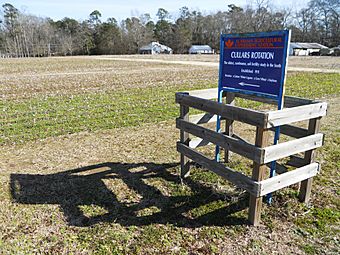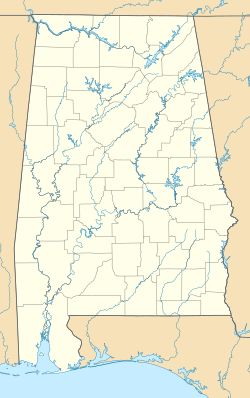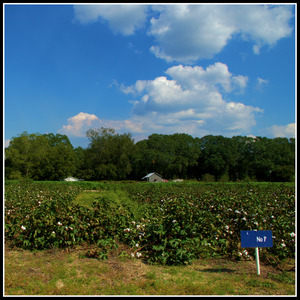Cullars Rotation facts for kids
Quick facts for kids |
|
|
Cullars Rotation
|
|

Cullars Rotation is the oldest continuous soil fertility experiment in the Southeastern United States. Cullars Rotation is located on the campus of Auburn University directly behind the Jule Collins Smith Museum of Fine Art.
|
|
| Location | Woodfield Dr., E of US 29, Auburn, Alabama |
|---|---|
| Built | 1911 |
| NRHP reference No. | 03000231 |
| Added to NRHP | April 18, 2003 |
The Cullars Rotation is a special science experiment located at Auburn University in Auburn, Alabama. It's listed on the National Register of Historic Places because it's very important! This experiment started way back in 1911. It's the oldest ongoing study in the United States about how different plant foods (called fertilizers) affect cotton crops. It's also the oldest experiment looking at soil health in the entire Southern United States.
History of the Cullars Rotation
The land where the Cullars Rotation is located has been used for farming experiments for a long time. In the late 1800s, scientists discovered that a plant disease called cotton rust was caused by not enough potassium in the soil.
In 1911, the Alabama Legislature set aside money for a new experiment. They wanted to study what happens over many years when you add different fertilizers to the soil. This experiment would use a three-year cycle of growing different crops: cotton, corn, and then wheat mixed with soybeans. The Cullars site was chosen for this important study. The experiment has been running continuously ever since!
In 1938, the land was bought by the Alabama Polytechnic Institute, which is now Auburn University. They continued to manage the study. In 2001, part of the Cullars site became the grounds for the Jule Collins Smith Museum of Fine Art. However, a 40-foot wide space was kept empty between the museum and the experiment. This space helps make sure the science experiment stays accurate and undisturbed.
What is the Cullars Rotation Experiment?
The Cullars Rotation experiment has three main sections. Each section is for one of the three crops in the cycle: cotton, corn, or wheat and soybeans. Within each section, there are 14 different ways the soil is treated.
Each treatment area is about 2000 square feet (184 square meters). There's a two-foot (60 cm) space between each area. This helps keep the different treatments separate.
Here are the 14 different ways the soil is treated in the experiment:
- Legumes (plants like peas or beans that help soil) are planted, but no nitrogen fertilizer is added.
- No legumes are planted, and no nitrogen fertilizer is added.
- Nothing extra is added to the soil at all.
- Nitrogen fertilizer is added, but no winter legumes are planted.
- No phosphorus is added to the soil.
- No tiny amounts of important nutrients (called micronutrients) are added.
- Extra potassium is added to the soil.
- A type of rock (rock phosphate) is added.
- No potassium is added to the soil.
- Two-thirds of the usual amount of potassium is added.
- No lime (a material that helps balance soil) is added.
- No sulfur is added to the soil.
- All the necessary plant foods, including micronutrients, are added.
- One-third of the usual amount of potassium is added.
Because some areas have been farmed continuously without adding nutrients, certain parts of the Cullars Rotation have some of the least fertile soil in the United States. This helps scientists see exactly what happens when plants don't get what they need.
Where is Cullars Rotation?
The Cullars Rotation is located near the Jule Collins Smith Museum of Fine Art in Auburn. You can find it at the corner of College Street and Woodfield Drive.
Since it's an active science experiment, the Cullars Rotation is not open for the public to walk through. However, you can see the experiment from the museum grounds. The Cullars Rotation was officially added to the National Register of Historic Places on May 18, 2003.




